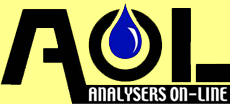Problems with Algae or Algal Toxins?
Nutrient pollution in surface waters can cause algae to increase to potentially harmful levels. Algae deplete oxygen and certain species of blue-green and red algae can be poisonous to aquatic life.
Modern Water's algae and algal toxin detection technologies provide fast, accurate and quantitative results.
| Parameters | Detection Range |
Modern Water Product Selection |
| Chlorophyll a | 0.1 to 100ppb | AlgaeChek Ultra - Fluorometer Probe |
| Phycoerythrin (Red algae) | 0.1 to 100ppb | AlgeaChek Ultra - Fluorometer Probe |
| Phycocyanin (Blue-green algae) | 0.1 to 100ppb | AlgeaChek Ultra - Fluorometer Probe |
| Cylindrospermopsin | 0.1 to 2.0ppb | ELISA plate EnviroGard |
| Microcystin |
0.3 to 5.0ppb 0.1 to 1.6ppb |
ELISA tube EnviroGard ELISA plate EnviroGard |
| Okadaic Acid | 0.2 to 5.0ppb | ELISA plate EnviroGard |
| Neo-Saxitoxin | 0.03 to 1.0ppb | ELISA plate EnviroGard |
| Nodularin | 0.04 to 1.0ppb | ELISA plate EnviroGard |
| Brevetoxin | 0.1 to 2.5ppb | ELISA plate EnviroGard |
| Saxitoxin | 0.02 to 0.32ppb | ELISA plate EnviroGard |
Modern Water’s combination of plate and tube test kits offer high sensitivity, quick results and detect a variety of algal species. These immunoassay methods offer a cost-effective solution for high throughput sample testing. A yield of up to 80 samples can be achieved per 96-well microtiter plate, depending on batch size.
Process Explained
Fluorometers
Different molecules absorb and emit light at specific wavelengths. In order to effectively use Fluorometry as a tool for environmental
analysis, the specific wavelengths of the absorbed and emitted light for the target molecules/compounds needs to be known. Modern Water fluorometers use LED light source to excite the molecules and then measure the emittance at the desired wavelength. The intensity of the emitted light provides the concentration of the target compound.
Immunoassay Kits (EnviroGard)
Immunoassay is an analytical method which uses an antibody as a reagent to quantitate specific analytes. The technique incorporates
the binding reaction of a target substance (antigen) with an antibody.
Features:
• Toxin-specific kits
• Use in field and lab
• Low-level detection
• Early warning before harmful levels are reached
• High sensitivity
• Rapid detection
• Easy to use
• Robust
For further product information or to request a brochure, please contact us
Stay Informed
When you subscribe to the blog, we will send you an e-mail when there are new updates on the site so you wouldn't miss them.

